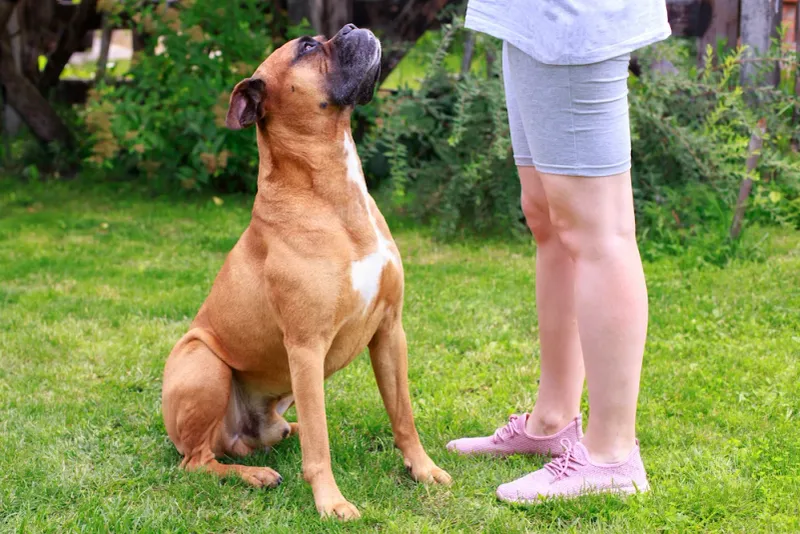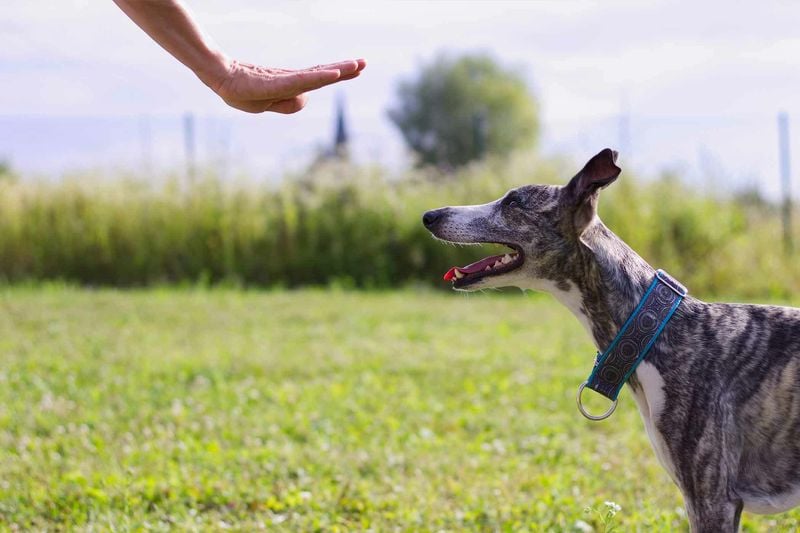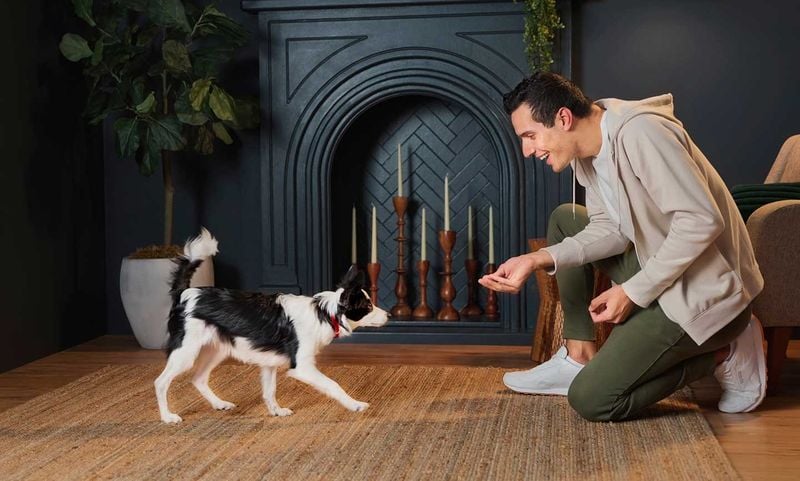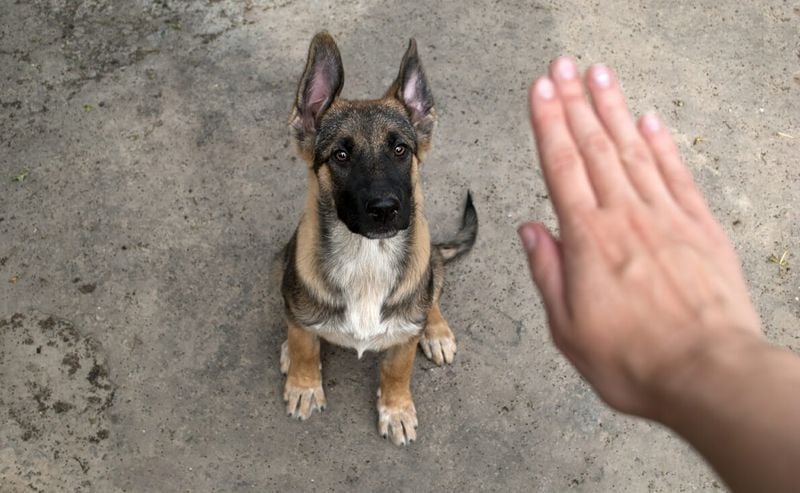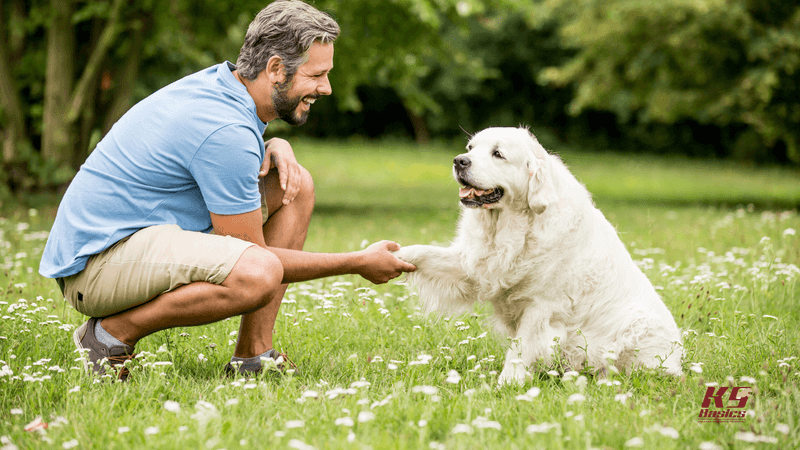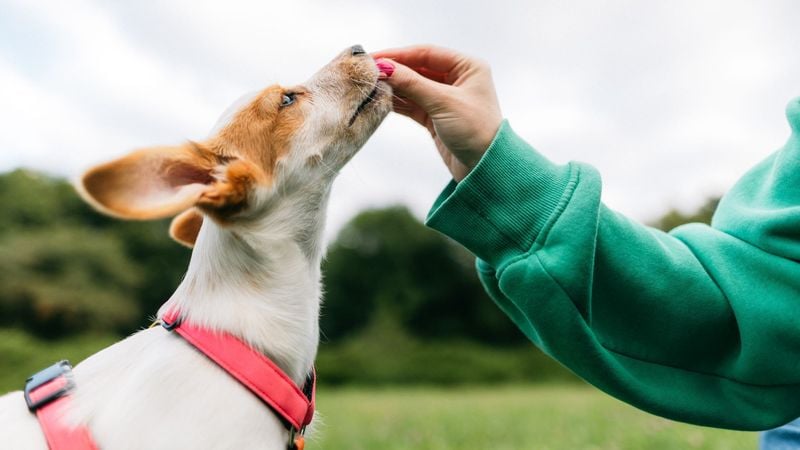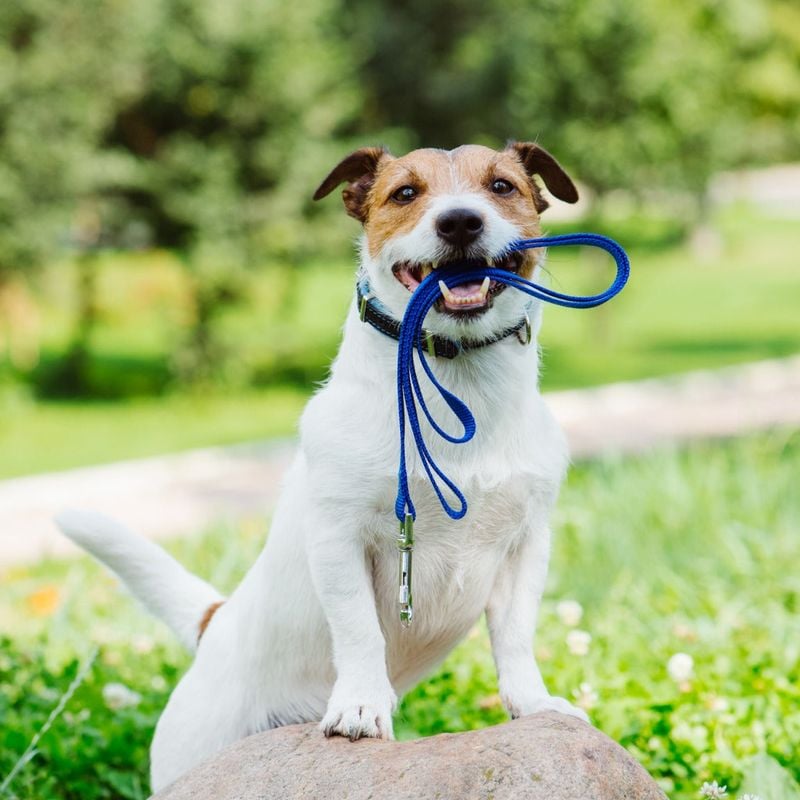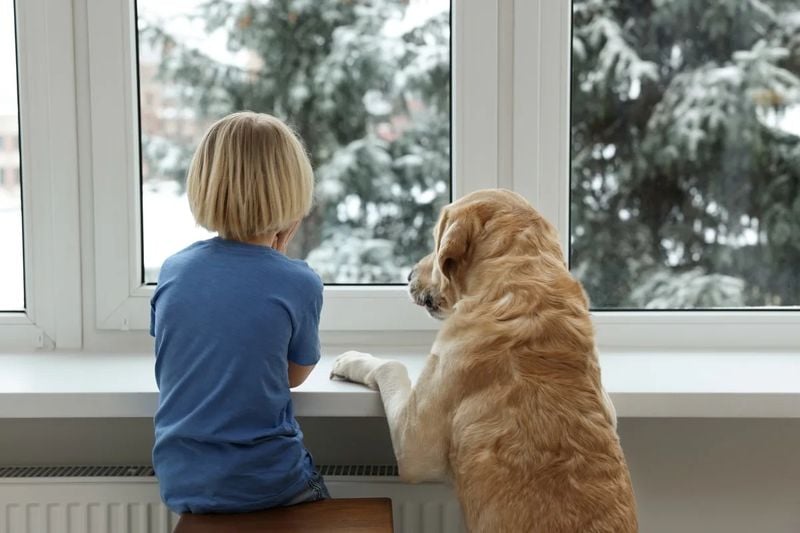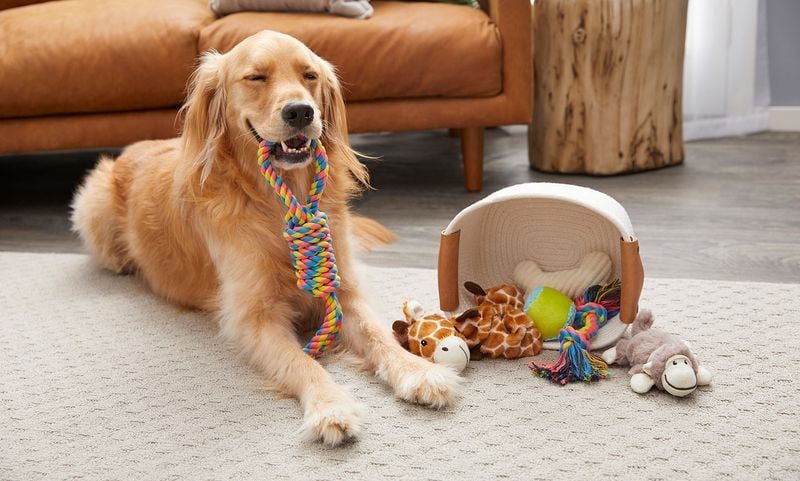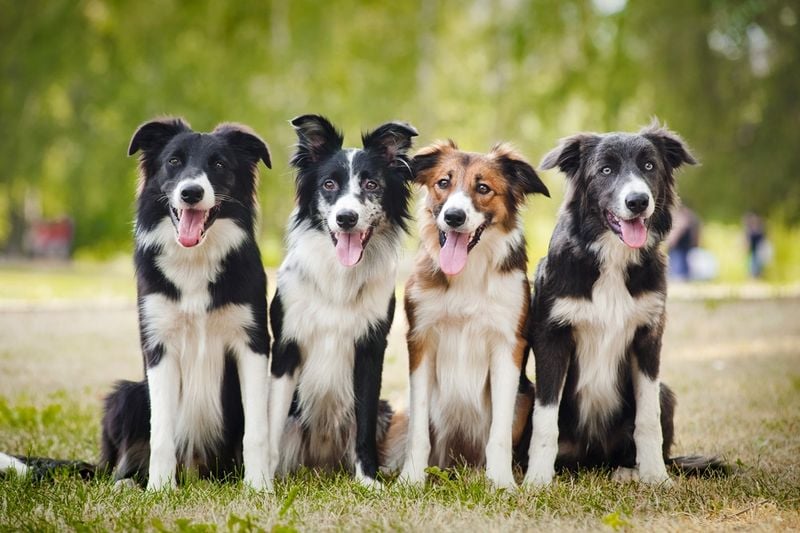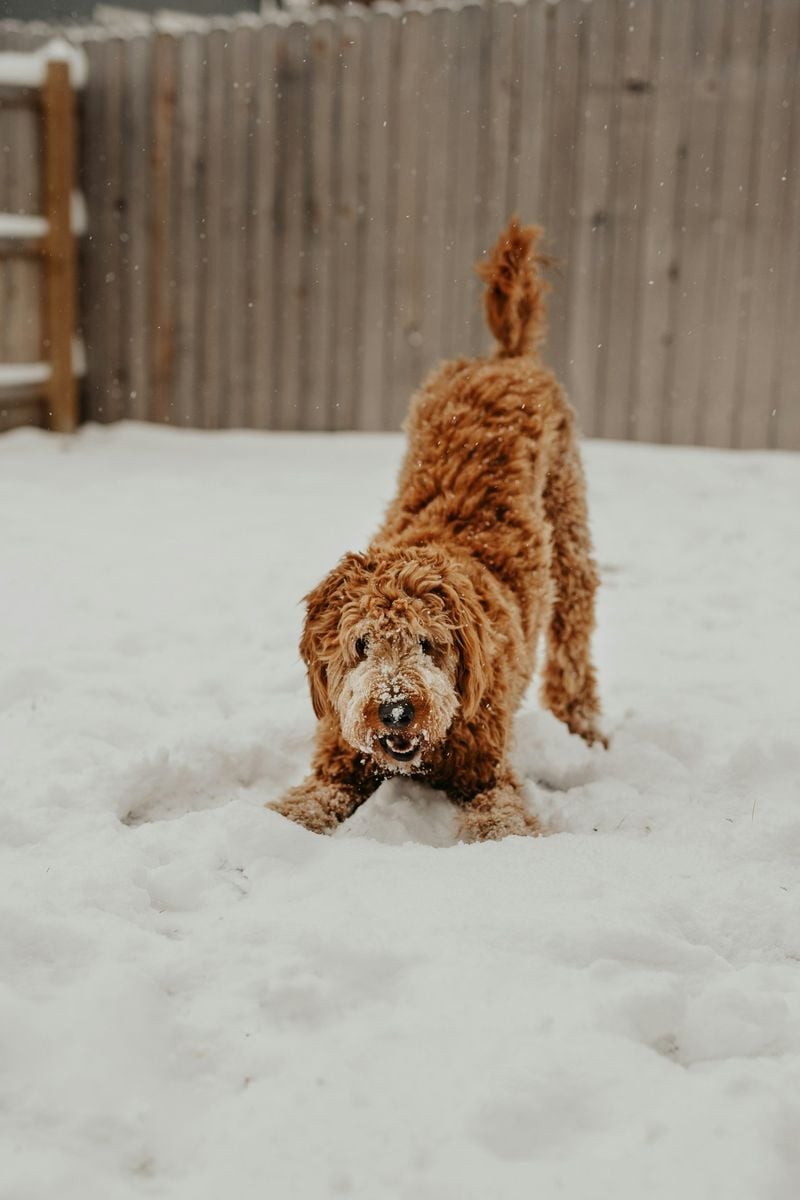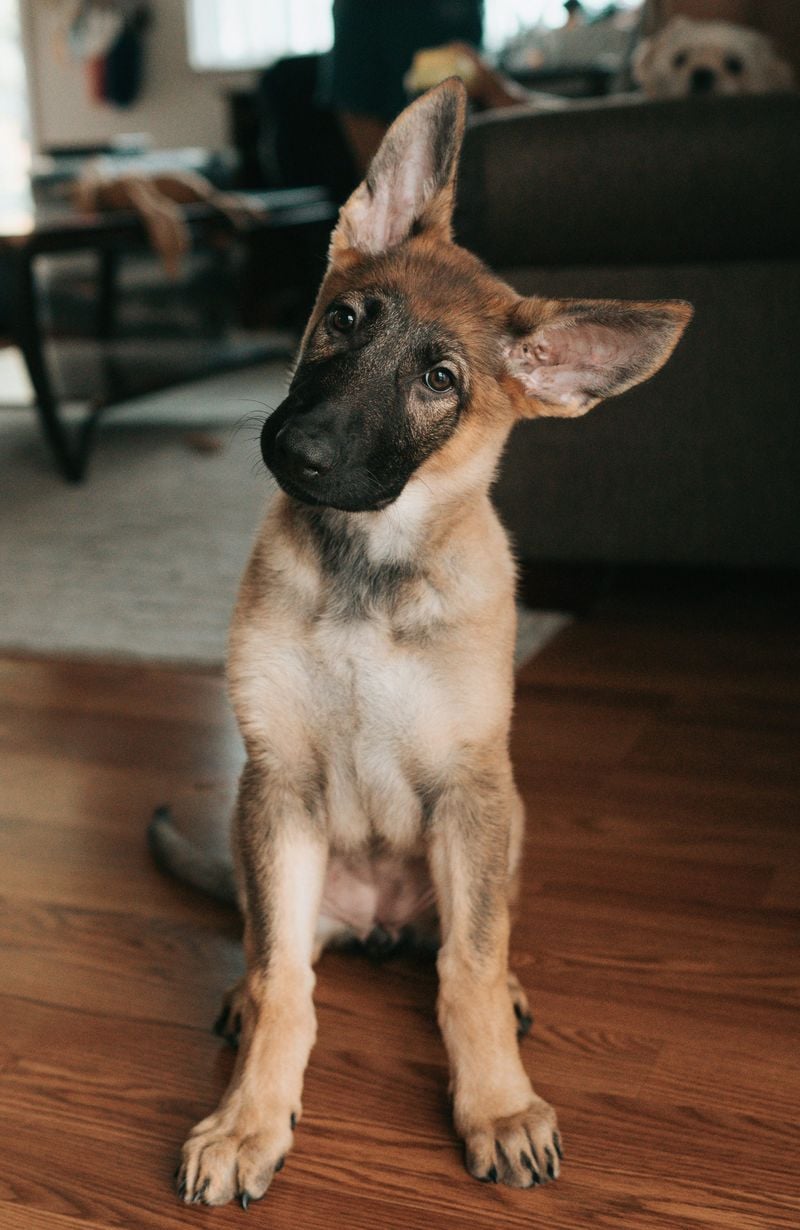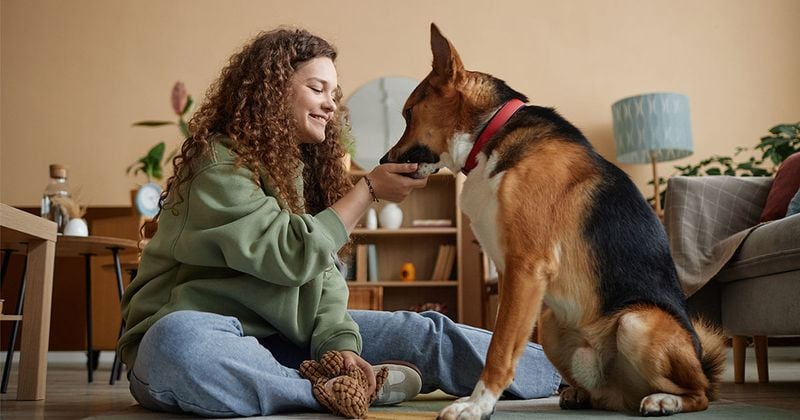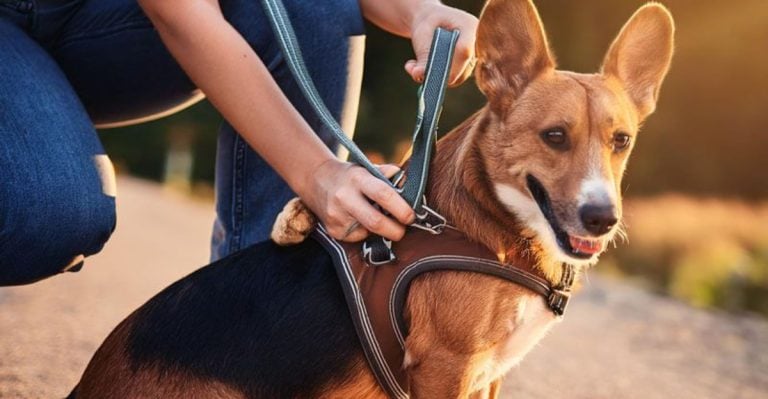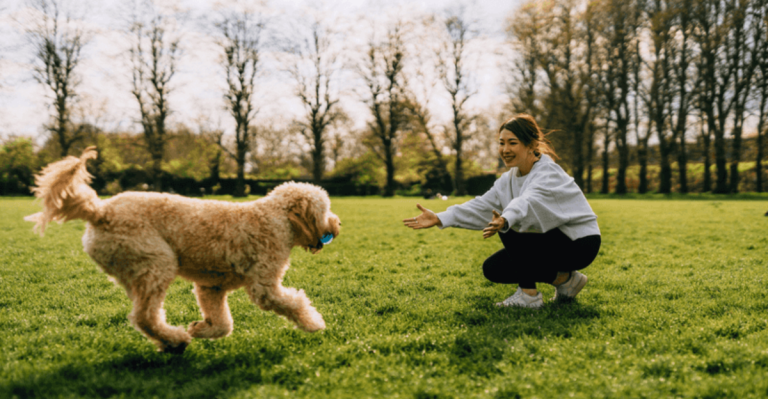13 Dog-Approved Words You Should Be Using—Plus 7 to Stop Saying
Our furry friends understand more than we think! Dogs actually recognize specific words we say, responding to both our tone and the actual terms we use.
How we talk to our canine companions can make a huge difference in their behavior, training success, and overall happiness.
Whether you’re a new puppy parent or a seasoned dog owner, knowing which words help your pooch thrive—and which ones might confuse them—can transform your relationship.
1. “Sit” – The Foundation Command
Dogs learn this command first for good reason. Clear and concise, “sit” helps establish boundaries and creates a baseline for more complex training. When properly reinforced with treats and praise, most pups master this word quickly.
Consistency matters when teaching this command. Use the exact same word each time—avoid switching between “sit down” and “sit” as this confuses your furry friend. Your tone should be firm but friendly.
Many trainers recommend teaching “sit” before any other commands because it helps dogs understand the concept of responding to verbal cues. Once mastered, it becomes your go-to for helping your dog calm down in exciting situations.
2. “Stay” – The Patience Builder
Mastering “stay” creates a safer dog who won’t bolt into traffic or rush unwanted visitors. This powerful command requires patience from both you and your furry friend as it goes against their natural instinct to follow you everywhere.
Begin training in distraction-free environments before gradually introducing challenges. Start with just a few seconds of staying, then slowly increase duration. Your hand signal—palm facing dog like a stop sign—reinforces the verbal cue.
Dogs who understand “stay” develop better impulse control overall. The command builds a foundation of trust between you and your pet, showing them that waiting patiently leads to rewards and praise.
3. “Come” – The Lifesaving Recall
Nothing beats the reliability of a solid recall command. “Come” could literally save your dog’s life in dangerous situations like approaching traffic or wildlife encounters. Make this word magical by always pairing it with something wonderful—treats, play, or affection.
Never use “come” for negative experiences like baths or medication. Your pup will quickly learn to avoid responding if the command leads to unpleasant outcomes. Practice in gradually more distracting environments to build reliability.
Many trainers recommend using a special high-value treat reserved only for recall training. This creates an extra incentive for your dog to come racing back to you, no matter what interesting smells or sights might be tempting them elsewhere.
4. “Down” – The Calming Cue
Unlike “sit,” the “down” command asks dogs to take a submissive position, which can be challenging for some independent or anxious pups. Teaching this word creates a way to help your dog settle in public places or when guests visit your home.
Start training in low-distraction environments with high-value treats. Lure your dog into position rather than forcing them down, which builds trust in the process. Many trainers pair this with a sweeping hand motion toward the floor.
Once mastered, “down” becomes invaluable in restaurants, outdoor cafes, or any place where you need your dog to relax for extended periods. The position naturally encourages calm behavior since it’s harder for dogs to spring into action from lying down.
5. “No” – The Boundary Setter
This universal deterrent helps dogs understand limits, but timing matters tremendously. “No” should be delivered the instant unwanted behavior begins—not after the fact when your dog won’t connect the word to their action. Keep your tone firm but not scary.
Effective use of “no” requires immediately redirecting to acceptable behavior. Simply stopping a dog without showing alternatives creates confusion. For example, say “no” when puppy chews furniture, then immediately offer an appropriate toy.
Many modern trainers prefer more specific interrupters like “leave it” or “off” instead of relying heavily on “no.” These targeted commands give clearer information about exactly what behavior should stop, making training more efficient and less frustrating for your furry friend.
6. “Good” – The Universal Praise
Your tone when saying “good boy” or “good girl” matters as much as the words themselves. Dogs respond to the genuine enthusiasm in your voice, so make your praise sound truly celebratory! This versatile word marks correct behavior in real-time, helping your dog understand exactly what earned your approval.
Pair this verbal marker with treats during training sessions for maximum impact. Eventually, many dogs will work happily for the praise alone, especially when delivered with authentic excitement.
Research shows that dogs actually process praise in the reward centers of their brains similar to how they process food rewards. Your heartfelt “good boy” activates the same pleasure pathways as a tasty treat, creating a powerful training tool that’s always available and calorie-free!
7. “Treat” – The Motivation Activator
Few words perk up canine ears faster than “treat”! This magical term creates instant focus and motivation, making it perfect for training sessions or redirecting attention in challenging situations. Many dogs learn to spell T-R-E-A-T after hearing owners try to discuss snacks secretly.
Use this power word sparingly to maintain its special appeal. Reserve it for training sessions or genuine reward moments rather than casually tossing it around. Pairing with a specific hand signal helps dogs understand even in noisy environments.
Research shows that dogs process familiar words in the left hemisphere of their brain—the same area humans use for language. Your pup isn’t just responding to your tone when you say “treat”—they’re actually understanding the specific word itself!
8. “Walk” – The Exercise Promise
Most dogs recognize this word before they’re fully trained on basic commands! “Walk” signals adventure, exploration, and quality time together—all things dogs crave. Many owners resort to spelling W-A-L-K once their clever companions learn to associate the word with leashes and outdoor fun.
Consistent walking routines help dogs understand when to expect exercise, reducing anxiety and overexcitement. If your schedule varies, teaching a specific pre-walk ritual like grabbing a special leash can help signal upcoming adventures without using the charged word.
Walking fulfills more than physical needs—it provides mental stimulation through sniffing and exploring new environments. Research shows that regular walks reduce behavior problems by satisfying dogs’ natural curiosity and need for sensory experiences.
9. “Ball” – The Play Initiator
Border collies and retrievers might start spinning in circles just hearing this magical word! “Ball” represents pure joy for many dogs, triggering their natural prey drive and play instincts. The word creates immediate excitement because it promises interactive fun with their favorite human.
For working breeds especially, ball play satisfies deep genetic drives to chase, retrieve, and problem-solve. Even non-retriever breeds often respond enthusiastically to this word after positive experiences with the toy.
Ball games provide excellent exercise while strengthening your bond through play. The word becomes even more powerful when associated with consistent play sessions. Some dedicated ball-obsessed dogs even learn to differentiate between their ball, tennis ball, and other specific ball types!
10. “Outside” – The Freedom Call
This wonderful word signals fresh air, interesting smells, and bathroom breaks! “Outside” becomes one of the first words many puppies learn during housetraining, as it consistently pairs with relief and exploration. The positive associations make it a powerful attention-getter.
For indoor dogs, “outside” represents an exciting change of scenery and sensory stimulation. Even yard dogs perk up at this word when it means walks or adventures beyond their usual territory. Many owners report their dogs understand the difference between quick potty breaks and longer outings based on tone and context.
Teaching a specific outdoor routine helps dogs transition smoothly between indoor and outdoor behavior expectations. This creates calmer departures and returns, making the “outside” experience more enjoyable for everyone.
11. “Car” – The Adventure Signal
For many dogs, “car” means exciting destinations like parks, beaches, or hiking trails! This powerful word creates immediate excitement in dogs who associate vehicles with adventures. Some pups even recognize the sound of specific cars—perking up when they hear their owner’s vehicle but ignoring others.
Early positive experiences with car travel help dogs form good associations with this word. Counter-conditioning techniques can help dogs who feel anxious about cars, gradually transforming the word from stress-inducing to excitement-generating.
Creating consistent car routines helps dogs know what to expect. Whether it’s a special car harness, a specific blanket, or a travel water bottle, these rituals help your dog understand that “car” means a safe, predictable journey to somewhere interesting.
12. “Toy” – The Enrichment Prompt
The word “toy” lights up the pleasure centers in your dog’s brain! This versatile term helps redirect inappropriate chewing or overexcitement by offering an acceptable outlet for natural behaviors. Smart dogs quickly learn to distinguish their toys from household items through consistent training.
Rotating toys keeps this word exciting and prevents boredom. Many owners maintain a “toy box” where dogs can select their preferred plaything after hearing the magic word. Introducing new toys while using this familiar term helps dogs understand the new item’s purpose immediately.
Research shows that play with toys fulfills different needs for different dogs—some crave the mental challenge of puzzle toys, while others prefer toys that satisfy chewing instincts or enable interactive games with humans.
13. “Okay” – The Release Command
This versatile word serves as the perfect release from other commands like “stay” or “wait.” Training “okay” as a specific release cue prevents dogs from deciding on their own when commands end. A consistent release word creates clearer communication and prevents confusion during training sessions.
Many professional trainers recommend using a unique word like “free” or “release” instead of “okay” since we use the latter frequently in everyday conversation. Whatever term you choose, pair it with a specific hand signal for situations where verbal commands might not be heard.
The release command gives dogs certainty about when they can move from a position or begin an activity. This builds confidence and reduces anxiety since your dog understands exactly when restraint is required and when freedom is granted.
And while those 13 words grab their attention, these next 7 usually go right over their head.
1. “Tomorrow” – The False Promise
Dogs live fully in the present moment, making “tomorrow” a confusing concept that creates unnecessary frustration. When you tell your disappointed pup you’ll go to the park “tomorrow,” they simply hear a meaningless word paired with no immediate action. This creates confusion rather than understanding.
Using future-tense promises with dogs sets unrealistic expectations. Your furry friend can’t conceptualize future events in the way humans do, leading to potential disappointment or anxiety when anticipated activities don’t immediately materialize.
Instead of using time-based promises, focus on clear, immediate communication. If play must be postponed, use distraction techniques or provide an alternative activity rather than making promises about future events your dog cannot possibly comprehend.
2. “Later” – The Confusing Delay
Similar to “tomorrow,” the word “later” creates a disconnect between your communication and your dog’s understanding. When you grab the leash but then say “later,” your dog experiences conflicting signals—the exciting visual cue of the leash contradicted by a meaningless sound that doesn’t result in the expected walk.
Dogs thrive on consistency and immediate cause-effect relationships. The concept of postponement simply doesn’t exist in canine cognition, making “later” an empty promise from their perspective.
Replace this confusing term with clear boundaries. Put the leash away completely if walks aren’t happening immediately, avoiding the mixed message. This prevents the frustration and anxiety that comes when dogs receive contradictory signals about upcoming activities.
3. “Maybe” – The Uncertainty Creator
Dogs crave predictability and clear communication. “Maybe” introduces unnecessary uncertainty that can increase anxiety in sensitive dogs. When you respond to your dog’s play invitation with “maybe,” they receive no actionable information—just confusing hesitation.
Research shows that inconsistent responses to behaviors can actually strengthen them through a process called variable reinforcement. Your “maybe” responses might inadvertently encourage persistent begging or demanding behaviors as your dog tries harder to get a clear answer.
Replace ambiguous responses with clear, consistent boundaries. Either engage fully with your dog or give a clear, kind denial followed by an alternative activity suggestion. This creates security through predictable patterns rather than leaving your dog guessing about your intentions.
4. “Why” – The Pointless Question
Asking your dog “why did you do that?” after finding a shredded pillow creates frustration for both of you. Dogs can’t explain their motivations or connect your question to past behavior. They live in the moment, making retrospective questions completely meaningless from their perspective.
When we ask “why,” we’re applying human moral reasoning to creatures who operate on instinct, opportunity, and learned associations. Your dog didn’t destroy the couch cushion to spite you—they found an interesting object with appealing texture when bored or anxious.
Focus instead on prevention and management. Rather than questioning past behavior, create environments where unwanted behaviors are difficult or impossible. This shifts your energy from unproductive questioning to effective solutions that set both you and your dog up for success.
5. “Always” – The Unfair Label
Labeling your dog with “always” statements like “you always pull on leash” creates a fixed mindset about behaviors that are actually fluid and changeable. This negative framing can unconsciously affect how you interact with your dog, potentially reinforcing the very behaviors you want to change.
Dogs respond to our expectations in subtle ways. When we mentally categorize them with rigid labels, we often miss improvements or fail to create opportunities for success. Your frustrated energy when thinking “he always barks at delivery people” can actually increase anxiety and reactivity.
Replace absolute statements with growth-oriented observations. Notice specific circumstances where behaviors occur and look for patterns. This problem-solving approach leads to targeted solutions rather than resignation about supposedly permanent behavior traits.
6. “Should” – The Unrealistic Expectation
Thinking your dog “should know better” imposes human moral reasoning on an animal that operates through associations and consequences. This mindset creates frustration when your dog fails to meet expectations they don’t understand or haven’t been thoroughly taught.
Dogs don’t generalize well between situations. Your pup might sit perfectly at home but appear “stubborn” in new environments because they haven’t learned the command applies everywhere. This isn’t defiance—it’s a natural learning limitation.
Replace “should” thinking with realistic understanding of how dogs learn. Break training into small, achievable steps with plenty of practice in different environments. This approach recognizes that reliable behaviors develop through consistent training rather than moral reasoning or inherent understanding of human expectations.
7. “Please” – The Unnecessary Politeness
While perfectly appropriate with humans, padding commands with “please” adds unnecessary length that can confuse dogs learning English cues. Dogs respond best to consistent, clear, one-word commands rather than variable phrases that change with your politeness level.
Your tone communicates your emotional state more clearly than polite words. A kind, upbeat tone while giving a direct command like “sit” conveys friendliness without complicating the instruction. Dogs naturally read your body language and voice modulation to understand your intentions.
Save your good manners for human interactions and focus on clarity with your canine companions. The most effective communication with dogs involves consistent cues, well-timed rewards, and clear boundaries—not human social conventions that have no meaning in the canine world.

